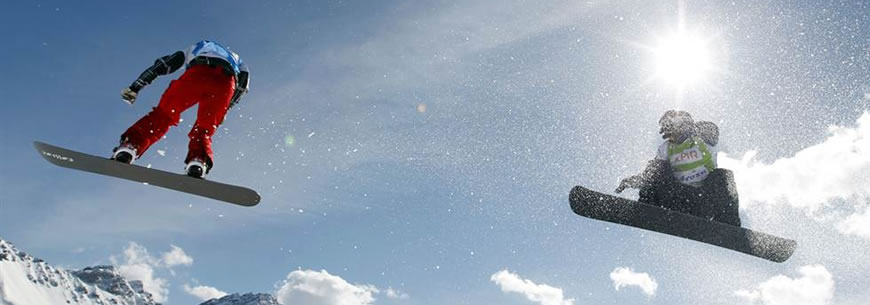in Foot and Ankle Surgery and Reconstruction

In the mid 20th century the incidence of severe ankle trauma in skiers was quite high due to the soft boot design allowing violent ankle twists. The introduction of boot design with hard shells and releasable bindings on the skis led to a dramatic fall in ankle and foot injuries. The result of this was a sustained rise in knee injuries commonly cruciate ligament ruptures as the twisting force during a fall is now transmitted higher up the leg towards the knee. The introduction of snowboarding however towards the end of the 20th century has seen the incidence of ankle injuries gradually rise again in snow-sports.
The popularity of snowsports has led to a constant stream of snow-related injuries returning to the UK for further treatment.
Freestyle, freeride, all-mountain snowboarders and the increasingly popular boarder cross (Snowboard X) disciplines tend to utilise softer bound boots with moulded inserts. Alpine/slalom snowboarders tend to wear a more ski-boot style boot that allows a more rigid binding to the boot and often the bindings are orientated in a more “downhill” style.” The ski boot is a more rigid hard case exterior with a softer moulded lining.
Ski boots tend to click in and out from the ski, allowing the ski to dis-engage if abnormal forces are applied through the ski, for example during a fall. Snowboards with soft binding boots do not usually disengage, producing different injury patterns.
The pattern of injury is interesting. In skiers lower limb injuries are more common, specifically soft tissue ligament tears rather than fractures. In snowboarders, injuries are actually more common in the head, upper limb and shoulder and more likely to be a bone fracture rather than a soft-tissue ligament tear. Amazingly, a number of the injuries that return to the UK were not sustained whilst skiing or boarding, but whilst walking!
Injuries that are seen can include (but clearly others can occur):
The foot is less constrained in the softer boot allowing movement inside the boot resulting in twisting injuries around the hindfoot. Rigid snowboard boots reduce the risk of ankle injury.
A ”classic” injury that has become more prevalent since snowboarding began is the snowboarder fracture. If you suffered a bad ankle sprain that doesn’t settle over time and you had X-Rays that were “normal” it is possible that you had a snowboarder fracture. These are difficult to spot on X-Rays and a further scan such as a CT scan is required.
The snowboarders fracture is probably caused by forced twisting of the ankle upwards and outwards, often when landing a jump..
You are advised to seek specialist attention. The reason it is often overlooked as an injury is because over time your ankle looks like it was just a bad sprain and treated with physiotherapy etc. These injuries are less likely to be missed if early consultation is made by a specialist Orthopaedic Foot and Ankle surgeon.
Treatment can involve fixation of the fracture with a small screw, or potentially removal of the small troublesome fragment of bone. This will be discussed with your surgeon.
Due to the rigidity and close moulding of many ski-boots, foot injuries are relatively less commonly encountered. The leg often twists above the boot near the knee but certain injuries can occur: